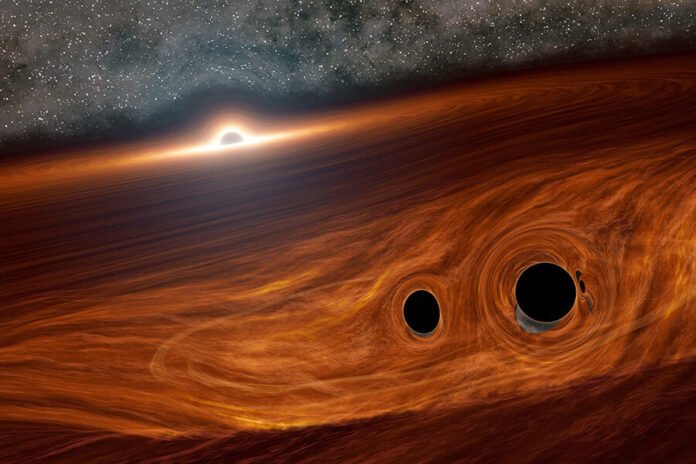Recently, scientists have unveiled a cosmic marvel that pushes the boundaries of our understanding of the universe: the heaviest pair of supermassive black holes ever detected. Equivalent to a staggering 28 billion solar masses combined, these behemoths challenge conventional wisdom and offer new insights into the nature of black holes and the evolution of galaxies.
The discovery, announced in a study published in The Astrophysical Journal, represents a significant milestone in our exploration of the cosmos. Using advanced telescopes and cutting-edge techniques, an international team of scientists identified the presence of two supermassive black holes at the heart of a distant galaxy cluster known as Abell 85. Situated approximately 2.4 billion light-years away from Earth, this cosmic pairing captivated researchers with its extraordinary mass and gravitational influence.
Supermassive black holes are cosmic giants, lurking at the centers of most galaxies, including our own Milky Way. These enigmatic entities possess masses millions to billions of times that of the sun, exerting a powerful gravitational pull that can warp space-time and swallow anything that ventures too close, even light itself. While astronomers have observed numerous supermassive black holes throughout the universe, the discovery of such a massive binary system is unprecedented.
The newfound supermassive black hole duo in Abell 85 offers a rare glimpse into the dynamics of galactic evolution on a colossal scale. According to current theories, galaxies grow and evolve through mergers and collisions with other galaxies, a process that often culminates in the formation of supermassive black hole pairs at their cores. As these black holes spiral inward, they emit gravitational waves—ripples in space-time predicted by Einstein’s theory of general relativity—before eventually merging into a single, even more massive black hole.
The detection of a binary supermassive black hole system with a combined mass equivalent to 28 billion suns provides valuable insights into the cosmic dance of galaxy mergers and black hole interactions. By studying the orbital dynamics and properties of these colossal black holes, astronomers hope to unravel the mysteries surrounding their formation, evolution, and eventual fate.
Moreover, the discovery of such an immense black hole pairing raises intriguing questions about the mechanisms responsible for their formation and growth. While astronomers have proposed various theories to explain the origins of supermassive black holes, including the collapse of massive stars and the accretion of gas and dust, the exact processes remain a subject of active research and debate. The observation of exceptionally massive black holes like those in Abell 85 offers valuable clues that could help refine existing models and shed light on the cosmic origins of these enigmatic objects.
Furthermore, the detection of binary supermassive black holes opens up exciting possibilities for future observations and experiments. With advancements in observational technology and the development of next-generation telescopes such as the James Webb Space Telescope and the upcoming Square Kilometre Array, astronomers anticipate discovering even more massive black hole pairs and studying their properties in greater detail. These observations could provide critical insights into the fundamental nature of black holes, gravitational physics, and the evolution of the universe itself.
In addition, the unveiling of the heaviest pair of supermassive black holes in the distant galaxy cluster Abell 85 represents a monumental achievement in our quest to unravel the mysteries of the cosmos. With a combined mass equivalent to 28 billion suns, these cosmic behemoths offer a glimpse into the dynamic interplay between galaxies and the supermassive black holes that inhabit their cores. As astronomers continue to push the boundaries of knowledge and exploration, discoveries like these remind us of the awe-inspiring wonders that await discovery in the depths of space.

